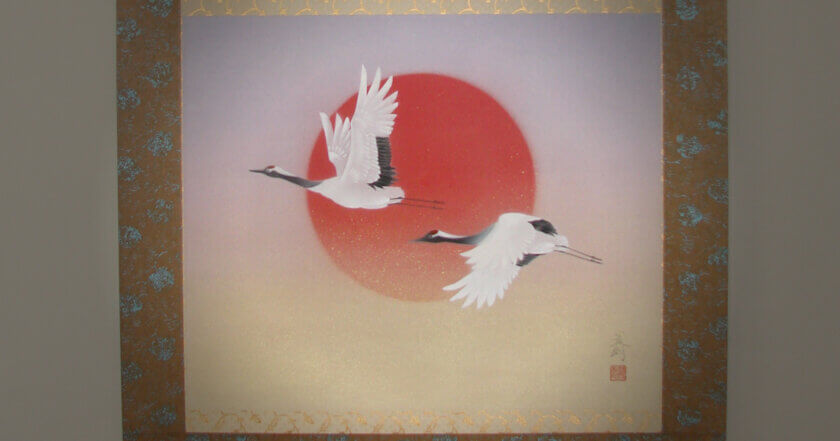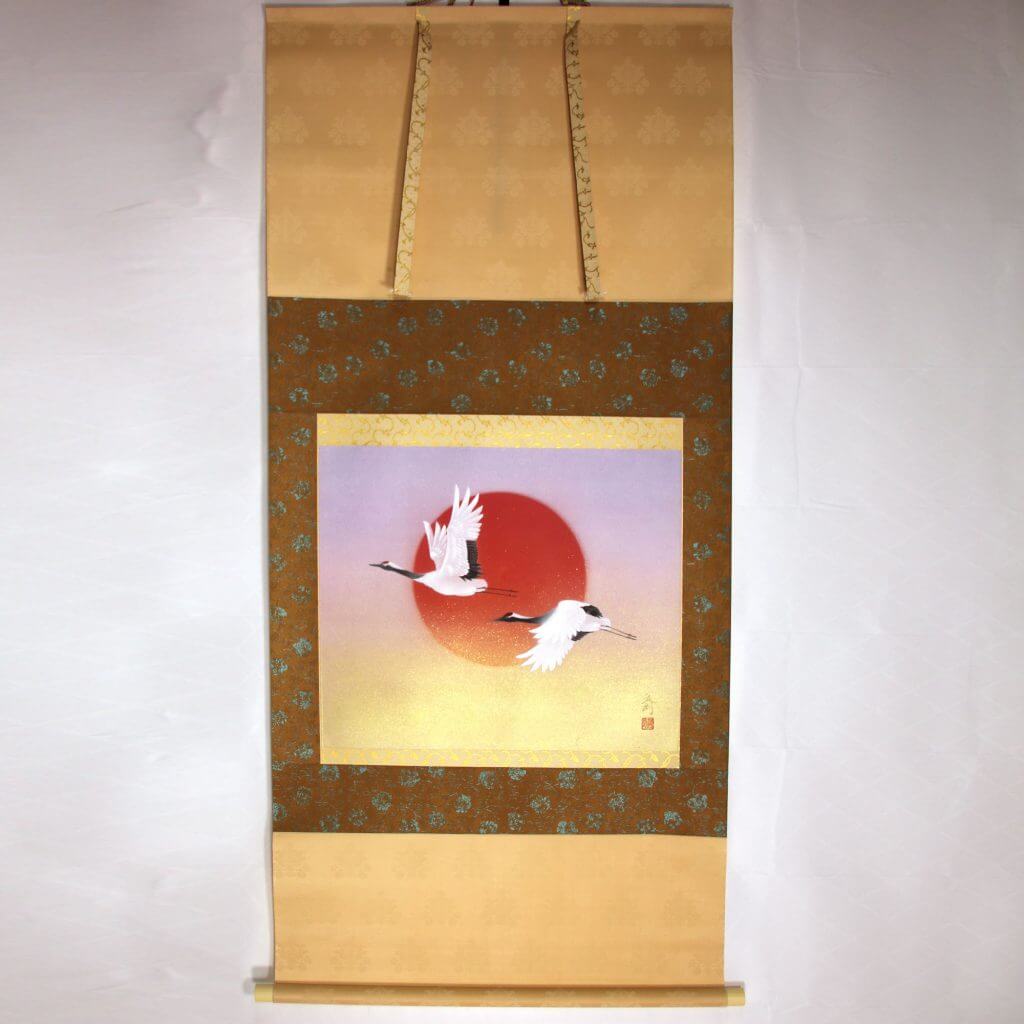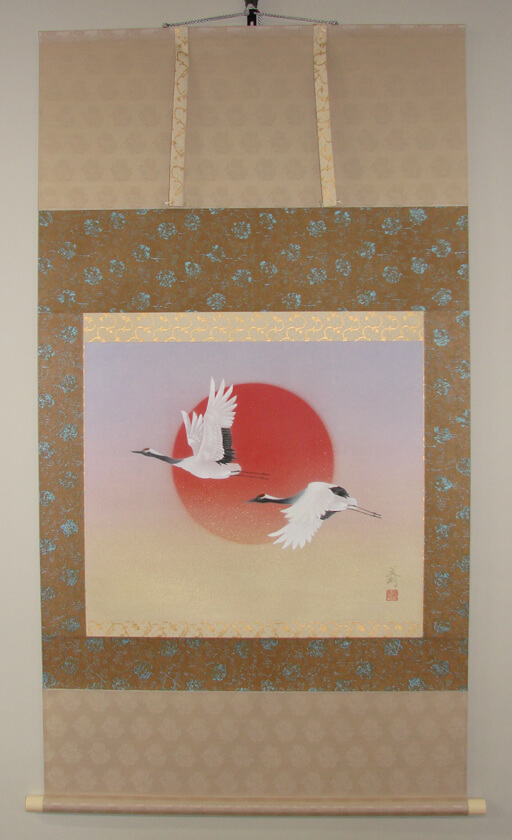Customization Request for Adjusting the Size of a Hanging Scroll from America

Japanese hanging scrolls are traditionally designed to be displayed in the tokonoma alcove of a Japanese-style room. However, outside of Japan, they are often hung in different locations, where their dimensions might not always be suitable.
We received an inquiry from a customer in the United States who had just such a concern, which we would like to share with you.
The customer was interested in purchasing the following scroll from us:

The height of this scroll is 1500mm, but the maximum height of the space where the customer intended to display it was only 1300mm. They inquired whether it would be possible to adjust this, expressing their desire to purchase the scroll if such adjustments could be made.
To shorten the height of a scroll, two methods are considered: replacing the top and bottom sections, referred to as “heaven and earth,” or a complete remounting of the scroll. The former has the advantage of being less labor-intensive and less costly but is limited to certain types of scrolls. If not feasible, the latter approach of a complete remounting is adopted.
Fortunately, in this case, it was possible to proceed with the first method, which pleased the customer, who then placed an order.
Adjusting the “heaven and earth” sections required additional costs and time, but the customer readily accepted these terms.
Here is the scroll after the adjustment:

Shortening it by 200mm altered the overall impression slightly, but the customer was very pleased with the outcome.
Dear Mr. Nomura,
We received the beautiful scroll today. My wife loves it and we will display it once our renovation is completed. We also watched your youtube video on how to display and store the kakekiju.
We are delighted that people from overseas take an interest in Japanese hanging scrolls and choose to display them. We aim to meet various requests for hanging scrolls moving forward.
Should you have any concerns regarding the dimensions of a scroll, please feel free to consult us.

